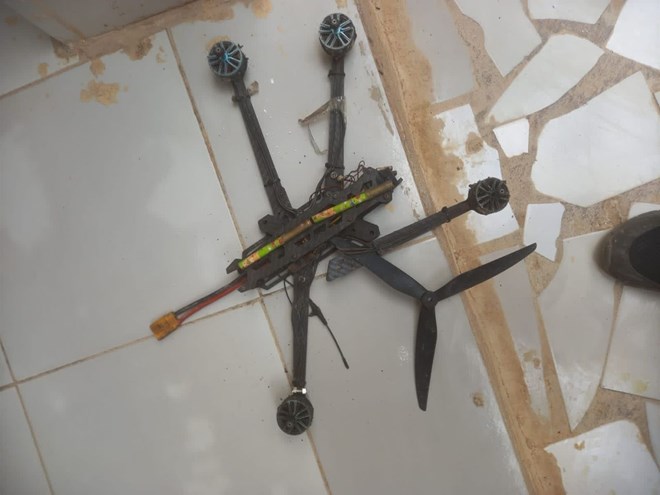ADF STAFF
Somali security forces intercepted a shipment of suicide drones being secretly transported across the Puntland region, possibly to be deployed against military and peacekeeping forces in the nation’s south.
The five devices, which were hidden in speakers, were commercial drones modified to carry explosives. Puntland Security Forces officials said they believe the drones came from Houthi rebels in Yemen, smuggled through Puntland’s Gulf of Aden port at Bosaso.
Authorities believe the drones were destined for al-Shabaab terrorists.
The discovery was a reminder of terror groups’ desire to acquire weaponized drones. It also appeared to confirm concerns among some experts that the Islamic State group and al-Qaida might be spreading weaponized drones from the Middle East to African affiliates.
Al-Shabaab has used drones for years gather intelligence and perform reconnaissance against peacekeepers, Somali National Army (SNA) troops and foreign dignitaries. Drones have also been used to film battles. In February, the SNA shot down al-Shabaab reconnaissance drones in the Galgaduud region.
“Drones have become increasingly integral to the operational strategies of extremist groups, aligning with the global trend of employing more effective methods to amplify propaganda and gain visibility, especially in the digital era,” analyst Ana Aguilera wrote for the Global Network on Extremism & Technology.
That has begun to change, however. In Sudan’s conflict, both sides have used drones to attack human targets and hospitals, markets and other buildings, showing how drone use is escalating on the continent.
In Mali, al-Qaida-aligned Jama’at Nasr al-Islam wal-Muslimin (JNIM) is suspected of using off-the-shelf, quadcopter-style drones carrying grenades and mortars to kill 10 Dozo militia members in April.
“This event [in Puntland] underscores the ongoing security challenges in the country, particularly concerning the adaptation of terrorist tactics,” Somalia’s Garowe Online wrote after the discovery and arrest of seven suspects.
Experts say the suicide drones suggest a growing connection between Houthis in Yemen and al-Shabaab. The two groups are opposed ideologically. Iran backs Shiite Houthis; Sunni al-Shabaab is allied with al Qaida. The relationship would provide the Houthis with money and al-Shabaab with advanced weaponry with which to attack Somalia’s government.
In July, officials in Bosaso seized illegal weapons that appeared to have been smuggled from Yemen.
“Thus, the Houthis are most likely offering attack drones or surface-to-air missiles because more advanced systems like anti-ship ballistic missiles and cruise missiles would require significant training and logistical assistance that would be difficult for al-Shabaab to obtain,” analyst Emily Milliken wrote recently in The National Interest.
The type of drones that Puntland authorities intercepted are difficult to detect and defend against. They’re also inexpensive and widely available, making them easy to acquire and simple to modify.
As al-Shabaab escalates its drone strategy, it is doing so against the backdrop of continuing drone attacks by the SNA and ATMIS as they use military-grade drones to inflict heavy losses on the terrorist group.
SNA and ATMIS drone attacks have undermined al-Shabaab by destroying equipment and targeting its leaders and bases, according to analyst Omar Abu Bakr Muhammad.
“Thus, drones became a decisive advantage for the Army, contributing to the defeat and expulsion of al-Shabaab from extensive areas,” Muhammad wrote recently for Raseef22.

